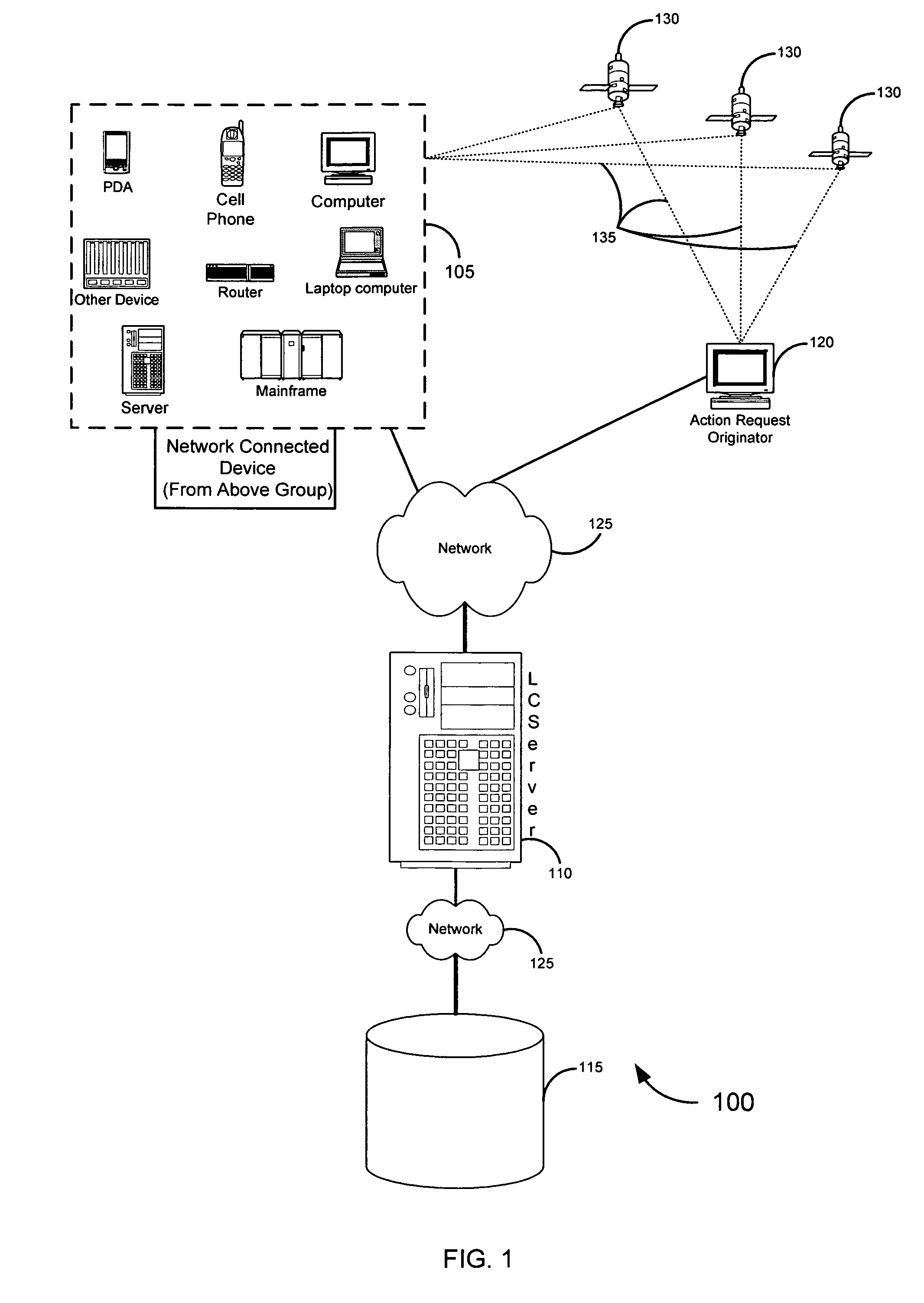Location information for avoiding unwanted communications systems and methods
a technology of location information and communications system, applied in the field of electronic communications, can solve problems such as fraudulent use of financial card information, new fraud schemes being created and evolving, and significant problems such as credit and other financial card fraud
- Summary
- Abstract
- Description
- Claims
- Application Information
AI Technical Summary
Benefits of technology
Problems solved by technology
Method used
Image
Examples
exemplary embodiment 480
[0071]An exemplary embodiment 480 shown in FIG. 4C, a diagram relates how the location of the action request may modify a geographic region within which the rule from block 472 is applicable. In this simplistic example, the location of the action request 485 is shown with two variables: within 1000 meters of “Home” region, or outside that area. For purposes of this example, the request relates to a request to authorize a transaction. The rules 490, comprising authorize or deny, are applicable in different geographic regions 495 depending on the action request (i.e. transaction) location. If the transaction request is made within 1000 meters of “Home,” the transaction request may be authorized as long as the Device 105 is within the city limits. If outside 1000 meters, the transaction request may be authorized as long as the Device 105 is within 10 meters of the transaction. Such a system might be of value to a person who wants to be able to shop near home without bringing the Device...
exemplary embodiment 950
[0140]3. System to Filter Unwanted Communications Based on Location and Identifier: According to various embodiments of the invention, the filtering rules specified above may also be limited in applicability to only certain senders. The following discussion describes an exemplary embodiment 950, illustrated in FIG. 9C, to show how such functionality may be implemented. A delivery request may also be associated with an identifier unique to the sender (e.g., an identifier unique to the device sending the electronic message, or an identifier unique to the sender associated with the device (such as an e-mail or IM address)). The same alternative elements described above in Section VI. 2. may be applicable to the following set of embodiments and, thus, the discussion will be focused on the differences.
[0141]At block 952, a network connected device (“sender”) may initiate a request to deliver an electronic message by creating a message. At block 954, the network connected device may recei...
PUM
 Login to View More
Login to View More Abstract
Description
Claims
Application Information
 Login to View More
Login to View More - R&D
- Intellectual Property
- Life Sciences
- Materials
- Tech Scout
- Unparalleled Data Quality
- Higher Quality Content
- 60% Fewer Hallucinations
Browse by: Latest US Patents, China's latest patents, Technical Efficacy Thesaurus, Application Domain, Technology Topic, Popular Technical Reports.
© 2025 PatSnap. All rights reserved.Legal|Privacy policy|Modern Slavery Act Transparency Statement|Sitemap|About US| Contact US: help@patsnap.com



